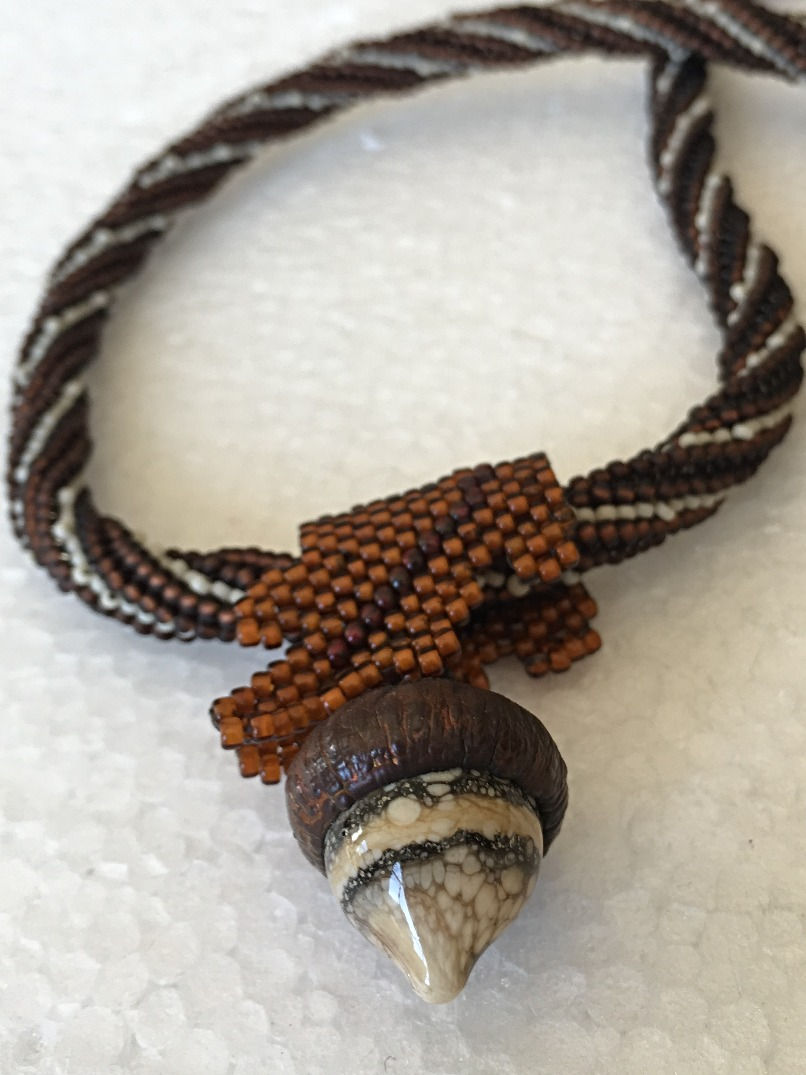Detailed Process of Lampwork Beadmaking (3rd in a series)
- Kathy Mattes
- Jun 14, 2021
- 3 min read
Updated: Dec 1, 2021
In previous posts I introduced the concept of lampwork bead making and showed how I have used them in my necklaces, earrings and bracelets. I also provided a brief description of the bead making process. In this post I want go into further detail about the process from the artist’s perspective.

After designing a piece, a lampworker must plan how to construct it. Once ready to begin, the lampworker slowly introduces glass rod or tubing into the flame to prevent cracking from thermal shock. The glass is heated until molten, wound around a specially coated steel mandrel, forming the base bead. The coating is an anti-fluxing bead release agent that will allow the bead to be easily removed from the mandrel, either a clay based substance or Boron nitride. It is this mandrel that forms the hole that beading thread or wire goes through. The bead can then be embellished or decorated using a variety of techniques and materials.
Forms and Types of Glass
Most lampworkers use rods of glass 7–8 mm in diameter, though pre-made stringers are available in 1–3 mm sizes, or rods of 15 mm or more. Sheet glass can be cut with tools into strips, though it is easier to manipulate if attached to a rod first.
Glass is also available in particles of various sizes (frit or powder), which is typically used for surface decorations in lampwork beads.

The lampworker also has a choice of several types of glass and will make a selection based on the design.
Soda lime glass
The most popular glass for lampworking is soda-lime glass, which is available pre-colored. It is the traditional mix used in blown furnace glass, and lampworking glass rods were originally hand-drawn from the furnace and allowed to cool for use by lampworkers. Today soda-lime, or "soft" glass is manufactured globally.
Lead
Lead glasses are distinguished by their lower viscosity, heavier weight, and somewhat greater tolerance for COE mismatches.
Borosilicate
Lampworkers often use borosilicate glass, as it is a very hard glass requiring greater heat. Borosilicate originated as laboratory glass, but has recently become available in color to the studio artist from a number of companies. At one time, soft (soda lime and lead) and hard (borosilicate) glasses had distinctly different looking palettes, but demand by soft-glass artists for the silver strike colors, has diminished the distinctions between them.

Basic ”Wound Bead” technique
The majority of round or oval beads are made using this technique:
· Preparing the mandrel – The beadmaker starts by dipping a mandrel, or wire into a release agent.
· Heating rod and mandrel – When both glass and mandrel are sufficiently warm, the beadmaker starts rotating the mandrel while allowing the glass to wind upon it.
· Shaping the bead – Beads are shaped using a combination of heat, gravity and tools such as graphite paddles, mashers, tweezers, and picks.
· Decorating the bead – Beads can be decorated by melting stringers, or fibers of glass on the surface, creating dots or lines. With a sharp pointed tool, feathers, hearts or other designs may be produced. Metal decorations of copper, silver, gold, palladium and platinum are applied as metal leaf, wire, mesh or fuming.
· Striking – If silver based colors are used the bead must be heated for a few moments in the torch flame or kiln to allow crystals to reform in the glass.
· Annealing – Once completed, beads should be heated to 940°-1050°F (depending on glass type), until the piece reaches its "stress relief point", held at that temp for a short time, then slowly cooled to avoid thermal shock.
· Cold working – The cooled bead can be further decorated. Standard cold working techniques can be employed such as sandblasting, faceting and polishing. Etching the finished piece with acid leaves a matte finish.
This has been a long blog, so thank you for staying with it. I hope that you now have a better idea of the artistic talent and hard work that goes into making each wonderful bead.







Comments